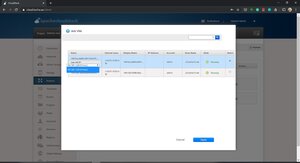How to configure port forwarding to the server located in a private network
- Home
- Blog
- Instructions
- How to configure port forwarding to the server located in a private network
We share useful information for users of virtual machines. Our clients often contact Tucha technical support service with a question about how to configure port forwarding to the server located in a private network, and each time we send a detailed and clear instruction in response. Now we have decided to use these emails to create a useful article that will help other users understand this process.
Why do you need to configure such port forwarding? Let us consider an example. By following all the steps listed below, you can set up TCP and UDP connections with the server connected to a private network. At the same time, port 3389 of this server will receive what will be sent to port 13666 of the external interface of the virtual router.
So, setting up port forwarding to the server located in a private network is very simple:
1. Go to the section Network, select our network (NET-2019111913000635), and then select View IP Address:

2. Next, select the IP address-195.3.205.13 (since we have several addresses, choose the one for which Source NAT is enabled):

3. Now we need the Configuration tab:

4. Select the firewall settings mode (Firewall):

5. After that, select the source prefix (Source CIDR), protocol (Protocol), and the range of ports (Start Port, End Port) to which you need to allow access. Next, click the Add button:

6. Then go back to the previous menu and switch to port forwarding management mode:

7. Select the range of ports on the server to which traffic should be forwarded (Private Port), select the range of ports on the virtual router (Public Port), and the protocol (Protocol). Next, click the Add button:

8. Last step is to select the server to which this traffic should be forwarded and its address:

That's all. As you can see, there is nothing complicated in the process of configuring port forwarding to the server located in a private network. If you still have any questions, please contact us 24×7. Always happy to help you!




